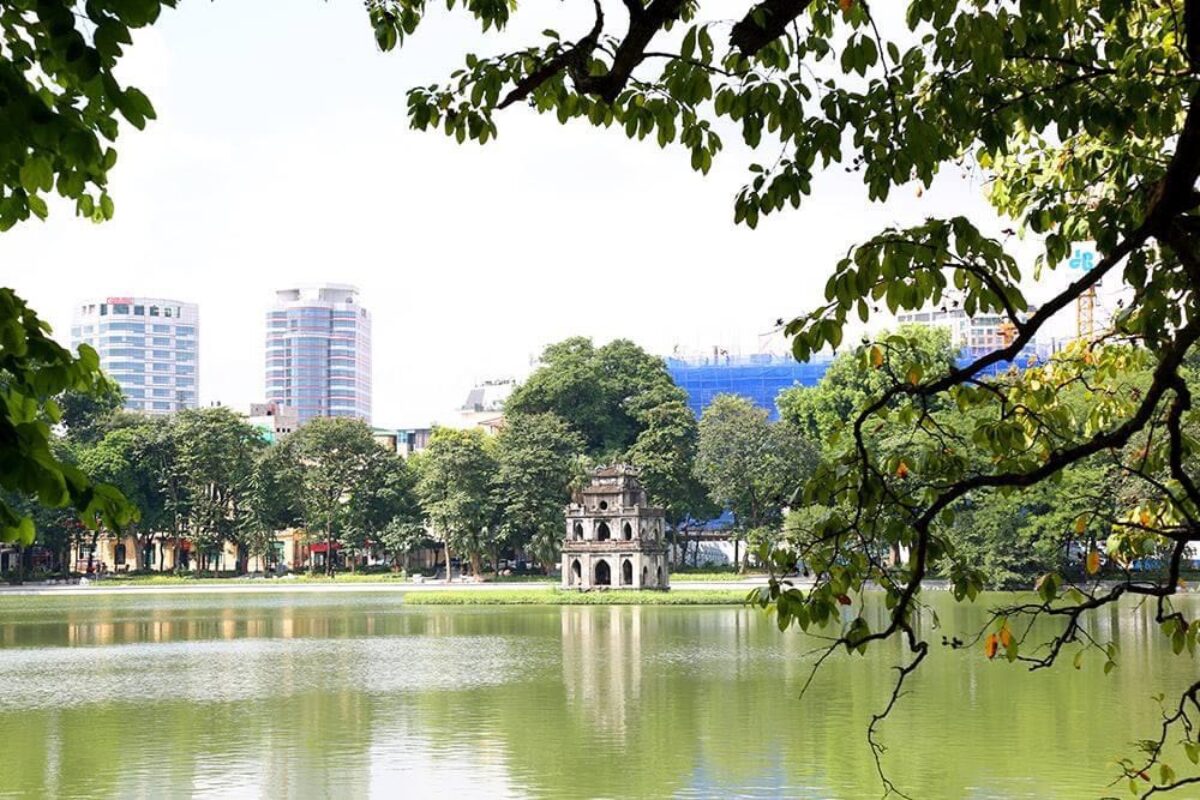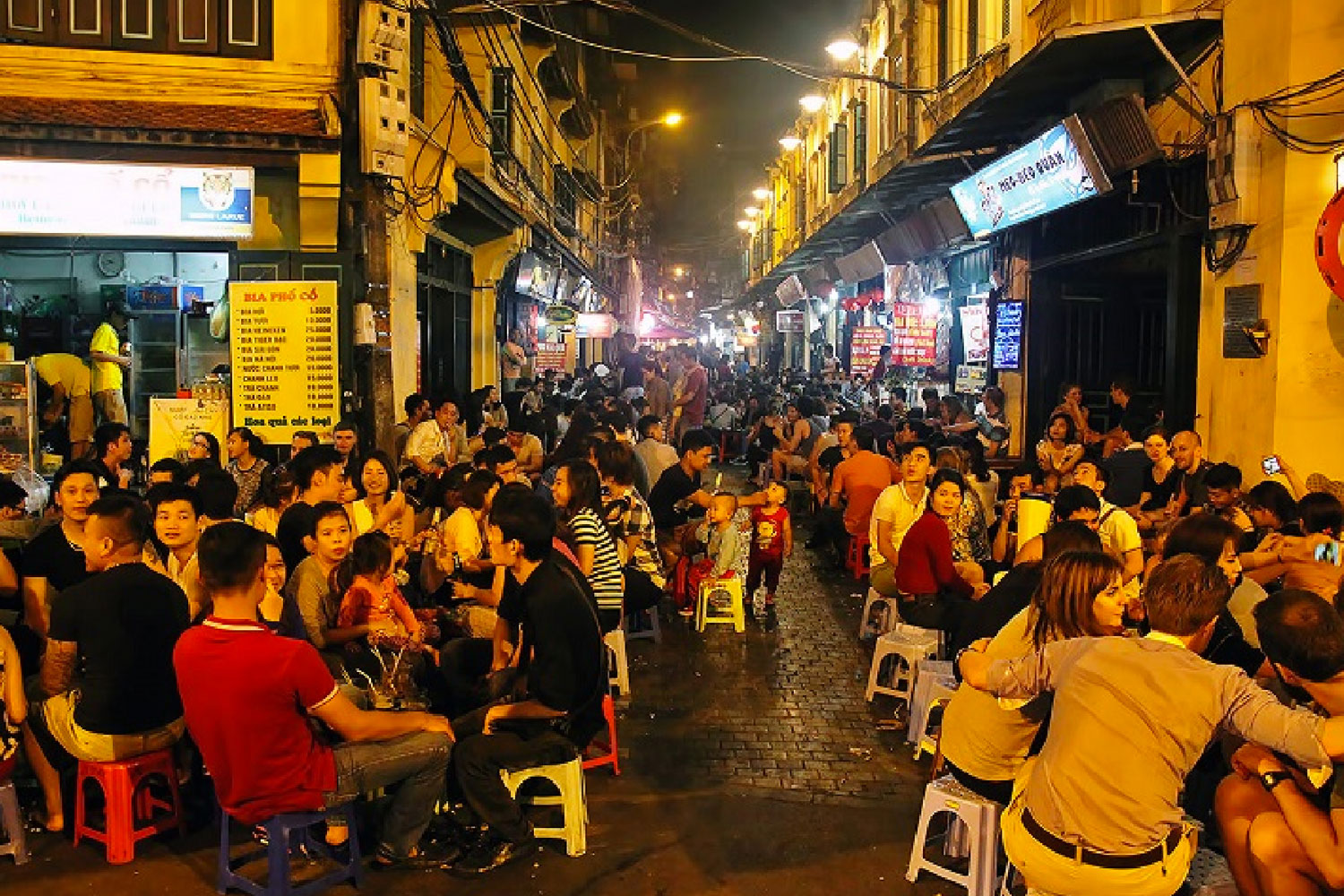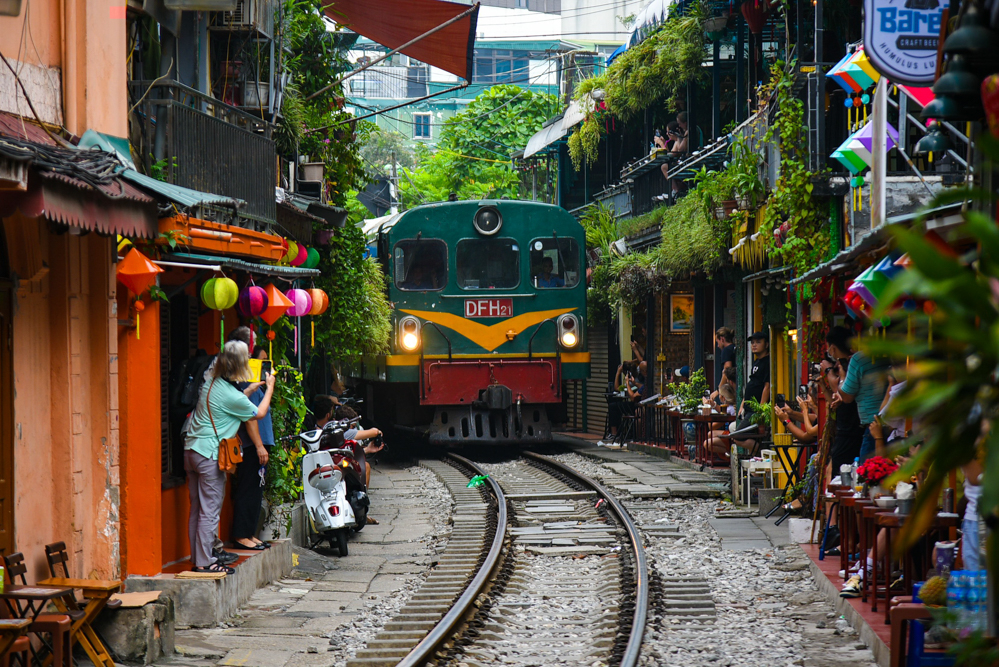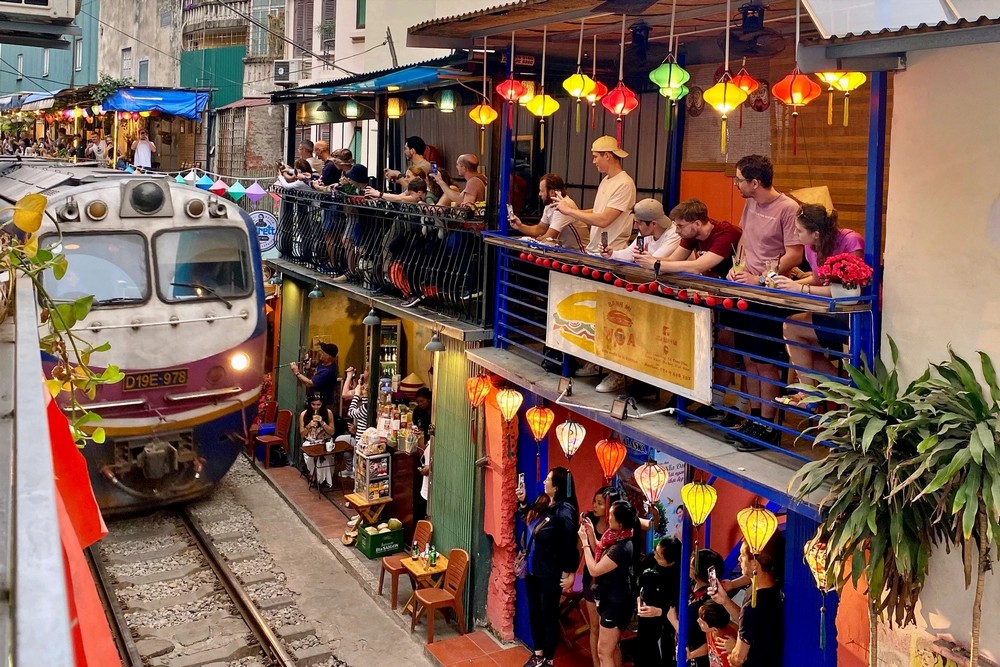
10 Plus Things To Do In Hanoi Old Quarter
When I ask myself my favorite things about Vietnam’s more than 1,000-year-old capital, the city where I live and work, the first thing that comes to mind is “Old Quarter”. Hanoi Old Quarter can be very different at different times. But one thing’s for sure — this quarter has a lot to offer everyone.
Few places in Vietnam have seen such rapid, global growth in a culturally rich and conservative landscape. Of course, there aren’t many places in Vietnam where people come here for modern entertainment just to have fun, and people come here to enjoy the peace and reminisce about the old days.
So, if you are looking for a unique and comprehensive experience in Hanoi, especially in the Old Quarter, this article could be the door for you to better understand life in Hanoi.
History of formation and development of Hanoi Old Quarter

The history of the Old Quarter can be traced back to the 11th century when Ly Thai To decided to move the capital from Hoa Lu (Ninh Binh) to Hanoi.
From the 13th century, it began to attract artisans from the vicinity, and over time organized into craft cooperatives and guilds. Residents of the same village gather and operate on the same street, making the street appear homogeneous.
In the 15th century, there were at least 36 craft wards in the area, not equivalent to 36 streets but twice that number – 76 streets.
Streets belonging to trade wards will be named “Hang” (commodities), then the name of the products that the ward specializes in producing. For example, Hang Tre Street only sells bamboo products.
The owner at the time taxed the width of the storefront, so the storage and living space was moved to the back of the building.
Therefore, long and narrow buildings, also known as tube houses, have become a familiar image in the old city. Typical dimensions for this type of house are 3 meters wide by 60 meters long.
In the 19th century, the area developed into a network of markets. To the east are busy residential areas as well as markets and craft wards. On the north and west sides are craft villages and agricultural villages.
Influenced by France in the 1950s, Western-style architecture competes with traditional Vietnamese and Chinese architecture. The integration of East and West has become a trend not only in architecture but also in culture.
The current Hanoi Old Quarter has no outstanding style, but French architecture can still be seen in many landmark buildings, the most famous of which is the Hanoi Opera House.
Due to globalization, handicraft guilds and cooperatives have almost disappeared, except for some streets such as Hang Gai (hemp fiber street), and Hang Bac (silver street)… system still exists.
On the other hand, coming to Hanoi’s Old Quarter today, you can find a whole set of original and new products from all over the world.
The ancient city is famous as the busiest and most developed tourist center, where visitors can enjoy attractions, cuisine, travel services, and entertainment.
What to see in Hanoi’s Old Quarter?

I’m always surprised that I never get work done in Hanoi’s Old Quarter, even if I don’t plan. Hanoi’s Old Quarter is a maze of alleys where you can find everything you didn’t know you needed.
From a variety of street food, restaurants, and sidewalk cafes to the majestic pagoda, the magnificent Opera House, and the rustic Long Bien Bridge. You will be surprised to walk by dozens.
Enjoy sidewalk cafe

Vietnamese coffee is known for its rich flavor and aroma. When you come to Hanoi Old Quarter, you can find the famous Vietnamese coffee in the best place – on the simple sidewalk, with just a plastic utensil, you can enjoy the coffee culture of Vietnam on its own.
Sidewalk Cafe doesn’t have the ostentatious design of Starbucks, but it has something else – the feeling of being part of everyday life in Hanoi.
Curbside coffee can be found almost anywhere in Hanoi’s Old Quarter. Just a short walk from Hoan Kiem Lake and you’ll find it right away. Make Roadside Cafe part of your Hanoi nightlife tour and you won’t be disappointed.
Order: black coffee (ice), black coffee (ice) (black coffee + condensed milk), egg coffee.
Watch the sunset from the Long Bien Bridge

Long Bien Bridge is another legacy from the French colonial period. The architect who built the bridge is the same architect who built the iconic Eiffel Tower. Like the Eiffel Tower.
Long Bien Bridge has become a symbol representing a specific period in the city’s history. Its rustic, vintage aesthetic makes Long Bien a great location for photographers.
You can reach the bridge from Long Bien station located on Tran Nhat Duat Street.
Hanoi Old Quarter Walking Tour

Just grab a map of Hanoi and you can go around the old quarter. A large number of libraries, bookstores, and art galleries are located just across the street from Hoan Kiem Lake.
From the fountain at Dong Kinh Nghia Thuc Square, going deep into the network of alleys, you will immerse yourself in the typical busy traffic of Hanoi city.
Here and there, you can see old houses – evidence of the glory days of the busiest and most prosperous trading area of Vietnam. Roads worth visiting:
- Hanggai: silk, tailor-made clothes
- Hang Ma: Traditional confetti, the whole street is full of Mid-Autumn Festival
- Silver Shop: Shop for silverware, jewelry, and miscellaneous accessories
- Hang Duong: Sugar, candy, an umbrella shop
- Ta Hien: sidewalk cafe, draft beer, and street food – a true tourist destination for all ethnic groups
On weekends, motorbikes and four-wheelers are banned in the old town, so you can enjoy street performances at a leisurely pace.
Shopping at Dong Xuan Market

Dong Xuan Market is a place worth visiting, but at the same time can be a challenge for tourists as Dong Xuan Market is the oldest traditional local market in Hanoi. It can be said that this is a shopping paradise, with everything you can think of.
However, shopping at Dongxuan Market is only cheap for those who know how to bargain. Even if you are not confident in your haggling skills, Dong Xuan Market is still the best place to shop for food, clothes, and souvenirs.
- When shopping at Dong Xuan Market, keep an eye on your belongings. Dong Xuan Market is not famous for pickpockets, but it can get very busy and crowded at times, so you should never be too careful.
- A few smiling Vietnamese words are really helpful when haggling. You can start with half the price announced by the store owner and gradually increase the price until the store owner agrees.
- Location: Dong Xuan Street
Walking around Hoan Kiem Lake

Hoan Kiem Lake and Ngoc Son Pagoda (Ngoc Son Temple) are classic attractions in Hanoi tourism. Located near the old town, the lake brings a breath of fresh air to the busy and congested streets.
In fact, after an exhausting hike in which you have to navigate the crowded stream of motorbikes and taxis, it’s refreshing to rest on the lakeside.
Ngoc Son Temple should be one of the best places in Hanoi to learn about Vietnamese worship culture. Ngoc Son Temple worships Wen Xiong Dequan, a literary star, and Chen Xingdao, a national hero. The Red The Huc Bridge is a must-see attraction in the old town.
Walking the street around Hoan Kiem Lake on weekends is also a safe, educational, and enjoyable playground for children and adults with traditional games and entertainment such as O An Quan.
Vietnamese-style skipping rope, Jenga, chess, etc. There are many street artists on these streets, as well as traditional art performances such as singing. For anyone interested in exploring the local culture, a weekend trip to Hoan Kiem is a must.
Advice :
- Ticket price to visit Ngoc Son Temple: 20,000 VND/person for foreigners.
- Opening hours: 7:30 am to 17:00 daily
- Miscellaneous: no noise, no smoking, no arms crossed, filming only when allowed.
Visiting Ancient House 87 Ma May Street

As one of the attractive destinations in Hanoi’s Old Quarter, the old house at 87 Ma May is a traditional house that recreates the typical living space of old Hanoi. The house is regularly open for tourists to visit, the entrance fee is 10,000 VND.
Night market
Hanoi Old Quarter Night Market is open every Friday, Saturday, and Sunday from 18:00 to 23:00. This is one of the busiest shopping places with about 4,000 stalls. All kinds of goods are traded here, from clothes to shoes, home appliances, handicrafts, souvenirs, etc. at affordable prices (if you can bargain).
Every Saturday night, at both ends of the street, there will be traditional folk performances and cultural exchanges such as Cheo, Quan Ho, and Ca Tru. This is a unique feature of the Hanoi Old Quarter night market, which attracts many tourists, especially foreign tourists.
Has spa and massage
Spas and massages in Hanoi’s Old Quarter are very popular and you can find the perfect skilled massage at prices ranging from very cheap ($5 for an hour of relaxation) to luxurious. They offer a variety of massages, including traditional Vietnamese, hot stone and shiatsu, Swedish, aromatherapy, reflexology, and lymphatic drainage.
Explore the old town

Shops flooded the sidewalks, motorbikes whizzed through the narrow streets, and the smell of noodles and flowers – the old town can become a busy place. Hop on your bike and embark on a journey of discovery on a guided tour through the chaos.
Once the main form of transport in Hanoi, tricycles travel at the perfect speed, allowing you to enjoy interesting street views without worrying about traffic and navigation. After this gentle introduction, pick a few streets to walk.
36 guilds in the Old Quarter named after the 36 crafts established in this part of Hanoi that produce quality goods for royalty inside Thang Long Castle, just a stone’s throw from the hotel short set.
Today, only a few streets remain to sell the same products as in the past. However, some streets still retain the traditions of the past. Exploring these places on foot with a camera in hand can be a lot of fun.
Silver Street (Silver Street) was once a place where silversmiths made money and jewelry for the royal court, now there are still shops selling jewelry and exchanging money.
Hang Ma is the place where Hanoians come to buy worship items and festival decorations. Hang Gai, now known as Xiushui Street, is named after the famous pink dye sold and used in clothing on this street.
The shops here now deal in custom fabrics, clothes, and dresses. Lan Ong is a fragrant street filled with traditional medicines and herbs.
Tip: For many locals, the Old Quarter is considered the “real” Hanoi. If you make friends with someone born in the Old Town, chances are they will share with you fond memories of growing up on these atmospheric streets.
Meet with diverse civilizations

O Quan Chuong is the only remaining part of the wall, once protecting the area around Thang Long Citadel not far away. The gate you see was rebuilt in 1817, although it was originally built in 1749
The gate is named after a Vietnamese soldier who showed great bravery in guarding the gate and long radio from the French attack in 1873. Today, it is an important symbol and symbol of the Vietnamese spirit.
While exploring the historic center, keep an eye out for the many temples built by ancient merchants. The ancient city was partly settled by Chinese immigrants, who also chose it as a place of business.
To learn how these Chinese merchant families lived in the past, visit the Ma May House, a UNESCO-protected heritage site.
If you want to enjoy a quiet moment amidst the hustle and bustle of life, you should weave along the alley next to the Church and take a nap in the quiet courtyard of Ba Da Pagoda.
Here you will find an elaborate statue of Buddha, considered one of the four treasures of Hanoi.
Church of St. Joseph has stood proudly since 1886, a reminder of the French colonial rule in Vietnam. Seen from the street, the bold neo-Gothic motifs of the church make a strong impression around the houses and streets.
Wherever you go, you also have the opportunity to encounter the typical tubular houses of the Old Town. The houses have narrow facades but are built deep and high, with many courtyards to get light.
Also of interest are the Soviet-influenced apartment buildings that you can find above and below Hang Dieu Street.
If you have time, you can refer to the attraction closest to the old town: Small cafes and stationery shops have moved into the building facing the train tracks, and countless Instagrammers come in every day to snap pictures with colorful backdrops.
Hanoians have a favorite invitation, “take a tour of the lake” (Let’s drive by the lake.) Of course, the lake is Hoan Kiem.
Nestled in the heart of Hanoi, this stretch of blue water is an ideal rendezvous throughout the day, especially in the early morning and evening.
In the hours before sunrise, joggers gather on the leafy lakeshore, men and women slowly practice tai chi, and friends gather in circles to hit sacks.
The night scene is almost the same. Couples mingle with the crowd, sitting on benches by the water, sipping green mangoes and drinking tea.
Stroll around the lake and admire the famous Red The Huc Bridge, Ngoc Son Temple, and the iconic Turtle Tower. On weekends, Hoan Kiem Lake is closed to traffic and becomes an ideal place for people-watching, when Hanoi’s old and young gather for outdoor recreation and exercise.
Tip: Do like the locals and buy an ice cream cone on Trang Tien Street. Walking around Hoan Kiem with ice cream in hand at night is an experience not to be missed in Hanoi.
Eat like a local

The Old Quarter has many signature restaurants and famous stalls that have been operating for many years. On Hoan Kiem Street, you’ll find a dried beef mannequin, a dish made of dried beef and papaya topped with crispy peanuts.
There are several versions of che (Vietnamese dessert), but locals flock to Che Four Seasons restaurant for their version of lotus seed tea and black jelly.
If you’re hungry, order a bowl of bun cha at Bun Cha Huong Lien, where President Obama ate, or Hang Quat for a less crowded option. One of the things Hanoians love to do is go out for coffee, people-watching, and share the news.
Don’t give up on the original egg coffee at Cafe Giang. Besides egg coffee, another unique dish of the old town is grilled caviar. Originating at La Vong restaurant, this magical concoction of turmeric and spiced fish balls is grilled and served with soft vermicelli, dill, and crispy peanuts.
Tip: After dark on weekends, Hang Dao Street turns into a night market, where you can sample unusual Hanoi street foods like snail meatballs, grilled quail, and marinated pork sausages.
When traveling to ancient Hanoi, the cuisine here is of course indispensable. Here’s a look at some of the dishes in Hanoi’s Old Quarter and the most famous places to eat here:
- Eat at Dong Xuan market
- Hang Buom Fish Noodles – 43 Hang Buom
- Pho Bat Dan – 49 Bat Dan
- Noodles at Cau Go – 32 Cau Go
- Noodles with shrimp paste and shrimp paste at 31 Hang Khay Alley, Hoan Kiem district
- Cha Ca La Vong – 14 Cha Ca La Vong
- Dried beef salad and filter cake on Hoan Kiem Street
Find interesting collectibles
There may not be many shopping malls in the old town, but shopping here happens on the street. The streets of Hang Dau, Ly Quoc Su, Ta Hien, and Hang Da are bustling with shops selling clothes, bags, shoes, and sportswear exclusively for tourists. For more options, try Vui Studio, a minimalist shop on Pho Cam, or a small natural beauty shop on Pho Hoi Vu.
If you love embroidery and weaving, Tan My Design has a great collection of fabrics by Vietnamese designers in their airy boutique in Hang Gai.
For great Vietnamese souvenirs, visit Nha Chung’s Collective Memory. A few doors down, Craft House Church offers accessories, stationery, and candles to take home.
A sample of Hanoi nightlife

After dark, Old Town put work aside to enjoy serious fun. Among these 36 fascinating streets, there is something for everyone. Just before sunset, take the elevator up to Diamond Sky Bar, an airy spot with panoramic views of the old town.
For a perfectly crafted cocktail, try the Polite Co’s menu. , or sip a premium gin and tonic at The Mad Botanist while admiring views of St. Joseph.
Back on the streets, Vietnamese people often gather on sidewalk corners to eat and drink, with lavish parties and endless beer sessions until late at night.
This ‘Bihai’ tradition is a fun way to experience local life and make new friends. The most famous beer corner in the Old Town is Bihailukou.
The party spills out onto Ta Hien Street, where backpackers and locals sit on small plastic chairs and drink draft beer in the evening air. Don’t forget to shout “one, two, three, do” and toast to you in the Hanoi Old Quarter!
Hanoi Old Quarter is located in the northeast of Hanoi and belongs to the Hoan Kiem district. The location of old city was intentionally placed between the citadel and the Red River, which was considered a favorable area for trade development.
if you need any support please contact Annie:
- Email: info@annie.vn
- Whatsapp: +84969043106







